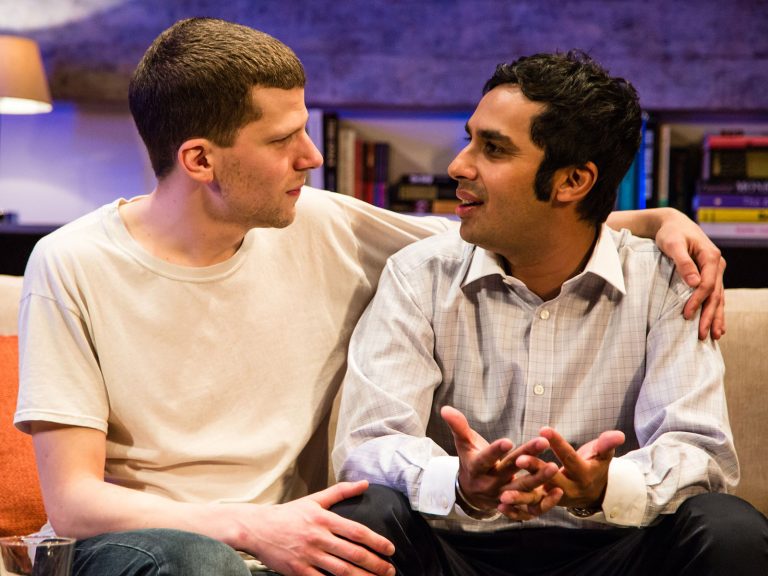BAFTA, Golden Globe and Academy Award nominated actor Jesse Eisenberg’s hit 2015 play The Spoils has made its way to London’s West End, with the Batman v Superman: Dawn of Justice star lining up alongside The Big Bang Theory’s Kunal Nayyar, Olivier Award winner Katie Brayben and Game of Thrones’ Alfie Allen for a run at Trafalgar Studios.
Written by Eisenberg and directed by Scott Elliott, The Spoils was first performed in 2015 at The Alice Griffin Jewel Box Theatre, Off-Broadway in New York, and was directed by Scott Elliott, with Set Design by Derek McLane. For the London transfer, Oliver Award-nominated Lighting Designer, Lee Curran, was asked to take on the lighting for the Trafalgar Studios run.
Curran explained his approach to the process of lighting for the adapted set design and the direction he was given for the lighting: “I had a meeting with the director, Scott Elliott, to talk about the look and design of the show. It was a transfer of a production from New York, and so although the set had to be adapted slightly to fit into Trafalgar Studios, Scott and Derek McLane, the Designer, were after the same look and feel.
“It’s essentially a naturalistic production, with a few more poetic moments – to use Scott’s words – particularly around transitions. The key to these is a big ceiling-to-floor window which takes up most of one side of the set, with a Manhattan skyline visible through it. It makes for a great directional source of colour and light in these moments. However, even within the naturalism, there are a lot of subtle cues to focus on the active areas within the larger space. One example is in the dinner party scene, where light subtly fades down in intensity across the width of the stage, away from the action around the dinner table, and intimate scenes around the sofa, where the apartment is present, but not competing with the stillness of seated characters.”
With this naturalistic brief in mind, as well as the aim of recreating a modern Manhattan apartment, the lighting design needed to light both the actors and the set evenly. Curran explained: “We had some practical and architectural fixtures built into the set to help with the look. The main thing was to achieve a good, bright, even coverage across the whole space, with the limitations imposed by a box set with a low ceiling and limited overhead positions.”
The transfer into Trafalgar Studios from a traditional theatre presented challenges with space, particularly with lighting the window and Manhattan skyline, as Curran elaborated: “The original production had a lot more space behind the window to achieve the lighting of the backcloths of the skyline, and the light through the windows. In Trafalgar Studios, we had about a foot of depth to do both. That caused a lot of head-scratching, as myself, Derek McLane and Lloyd Thomas, the Production Manager, tried to find every last millimetre to help the cause.”
To combat these challenges, PRG XL Video supplied a variety of lighting fixtures that helped achieve the desired effects. Curran clarified: “We needed really small, powerful, colour-changing units with very good dispersion at short distances to solve these problems. With the Martin [by Harman] MAC Auras and Philips Kinetics ColorBlazes, PRG XL Video provided the kit for the job. Elsewhere on stage, the bulk of the work was done by ever-reliable ETC Source Four tungsten fixed-lens units, with a few Par 16 Birdies in particularly tight spots.”
With the design complete and installed, Production Electrician John Tapster looked after the fixtures for the run, with Michael Corcoran operating the lighting desk.
Peter Marshall, PRG XL Video’s Account Director for theatre lighting commented: “We were very happy to work with Lee to help achieve his design for The Spoils, especially in this extremely challenging environment with little or no space to work with. Even in a production where a natural-looking light is the aim, Lee’s design demonstrates that subtle nuances can transform a scene completely.”
The Spoils runs at Trafalgar Studios until Saturday 13 August 2016.


